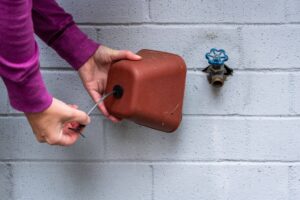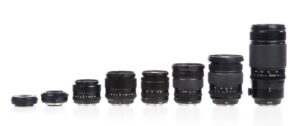Like so many things in life, photography is all about learning, growing, and pushing yourself forward.
You’ll know you’re improving when you feel a little out of your comfort zone.
Snap & Sell Photo Club member Kim Nelson loves to photograph wildlife, nature, and fitness-themed images for stock, and she’s done very well with it.
But she didn’t stop there.
She built on her success by continuing to photograph new things, even if it meant learning new photographic skills and heading into uncharted territory.
This is especially important to do right now, when the things you normally photograph (travel, for instance) might not be accessible.
Kim is putting in the work and actively doing what it takes to grow her portfolio and discover new types of images she can sell.
I hope her story below inspires you to push out of your comfort zone and grow your stock photo portfolio by shooting something new this year!
Snap & Sell Photo Club Member Spotlight:
Interview with stock photographer, Kim Nelson
Bonnie: What are you enjoying about stock photography?
Kim: The challenge to explore different things with photography and to grow my skills. For example, I added editorial stock to my repertoire last year. Another is just seeing which of the different types of images that I submit sell, and where they are selling. Shutterstock has a fun map of where your images are selling around the world.
Bonnie: What kinds of photos do you like to take and submit to your agencies?
Kim: I started out with nature and wildlife, which has always been my photography passion. As I figured out more about how the stock photography game works, and built some confidence that I could do this, I’ve added other genres of photography that I hadn’t focused on before. I’m a gym rat and had access to my old gym after hours and started shooting fitness-related images with assorted weights and accessories; barbells, plates, kettlebells, boxes, ropes, etc.
Last year I started taking kettlebells outside for fitness in nature. I had some success last fall with kettlebells combined with colorful fall leaves. I also branched out into food photography. It’s been a fun challenge and very different from wildlife and fitness.
Bonnie: What’s the story behind your best-selling image?
Kim: My first couple of years with stock, my best-selling photo was this barbell with red plates on a black gym floor:
 Now, two wildlife images have overtaken it.
Now, two wildlife images have overtaken it.
A hippo running and chasing some pesky birds in Botswana, and a family of brown bears in Katmai National Park in Alaska. They are currently my number 1 and 2 earners on Shutterstock.


The hippo picture was taken while on a boat cruise on the Chobe River. This hippo was very entertaining, running around trying to keep the birds from landing on its head. For a short time this image was the first one that came up on a Shutterstock search for “hippo”. Today it is still on the first page that comes up. I had a really nice surprise last when I was reading an article on top animals to see in Africa and my image was used for animal number eight, a hippo.
The bear family was shot in evening light while mama bear and the blond cub stood up to check out our group as we hiked around a corner and into view. I only got a quick couple of shots off before we backed up the trail and out of view to give the bear family some space. I got lucky that this shot came out so well given the 30 seconds or so that I spent shooting before backing up around the corner.
My top earners on Adobe Stock are fitness/sports related. A closeup of a white golf ball on a putting green has overtaken the barbell on gym floor image.

The two agencies I’ve had the most success with are Shutterstock and Adobe Stock, so I primarily focus on them now.
Bonnie: Any new images that are doing well for you?
Kim: My top sellers on Shutterstock from last year are me putting a foam cover over an outdoor faucet and an editorial shot of a local elementary school that was recently built.


To grow my sales, I started taking pictures of myself doing normal home maintenance tasks using the timer on my camera.
So, last fall I took pictures of me raking up fall leaves, putting foam covers on outside faucets, using a leaf blower on the roof to clean out gutters, etc.
I started getting a few sales immediately from those images.
The school image is one of a set I took just to see if I could figure out the requirements and get accepted for editorial on Shutterstock. I never expected to sell any of the school, but I am happy I was wrong about that.
One of my key focuses this year is to continue adding images with a more commercial or editorial focus to my portfolio, in addition to the nature images I love shooting.
This shot of red leaves was my top selling 2019 shot on AdobeStock, which makes me happy and gives me motivation to keep photographing nature for stock.

Bonnie: About how much income have you made with stock so far?
Kim: Around $3,800 so far ($2,200 on Adobe Stock and $1,600 on Shutterstock), and very small amounts on assorted other sites that I don’t spend much time on anymore. The Shutterstock app is very handy and fun to track your sales on a monthly basis.
Looking back to mid-2015 when I started with stock I can see my sales trend going in the right direction. Now that I have a good feel for the technical requirements for stock, I am making more sales in downloads and earnings per month in each year, especially last year, when I expanded my focus.
Bonnie: Any new things you’ve learned over the last year?
Kim: My biggest area of growth has been in using a C-stand and doing flat lay images with food, and the composition and lighting challenges that go along with that. It’s a big learning curve with lots more room for growth. Adding editorial stock has also been a big learning experience recently.
This year, I am taking a serious leap into learning about video for stock, and I have to confess to being a little anxious about that. But really, what’s the worst that can happen? I can get stock rejections while I am learning something new. Not fun, but not fatal, and generally part of the learning process.
Bonnie: Your number one tip for beginners who would like to give it a go?
Kim: Don’t give up. It’s hard at first, but try not to take rejections personally. Instead, use them for learning. Shoot something you love and get to work on figuring out how to shoot that subject in a way that meets image technical requirements for acceptance (focus, composition, lighting, etc.). If in doubt, simplify. The image that has earned me one of my highest single sale commissions so far is a white golf ball on a 2’ x 1’ section of putting green. It still blows my mind that I earned $67 for one download of that image.











